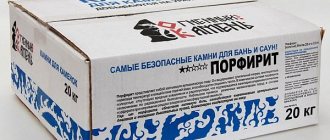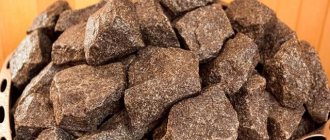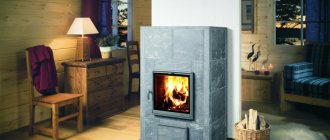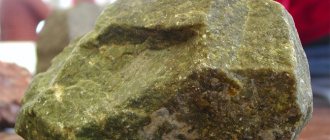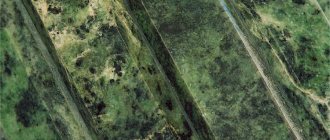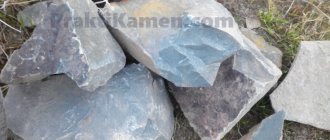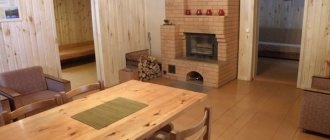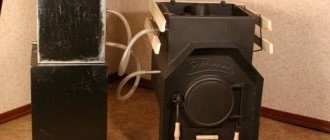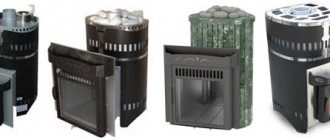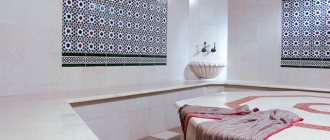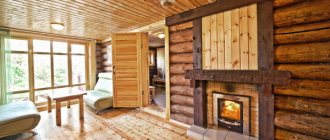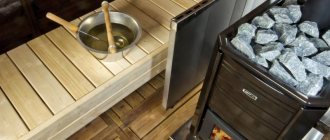The use of natural stones in the construction of a sauna stove allows you to retain heat for a long time. Not every stone can be used in a steam room. The benefits of thermal procedures directly depend on its quality. Jadeite for baths is an ideal option in terms of aesthetics, strength, composition and safety. The stone is heat-intensive, heats up deeply, does not crack or deform.
What is jadeite and what types are there?
The mineral belongs to the group of semi-precious and ornamental stones. It is used for inlaying jewelry, decorative items, dishes, and, more recently, for heating and finishing baths and saunas. Processed jadeite is divided into three categories:
- Imperial;
- Commercial;
- Utility.
The stone is of a high standard, the most expensive and of the highest quality - Imperial. Visually it resembles dark or light bottle glass. The breed does not contain impurities and is not treated with aggressive compounds. The price of the stone is high and can reach up to 50 thousand dollars per gram. Imperial jadeite is mainly supplied from Burma. The main buyers are Chinese. They make dishes, decorative elements, and jewelry from stone.
Commercial minerals are also suitable for making jewelry, but are more often used as ornaments. All kinds of inserts, dishes, and figurines are cut out of them. In eastern countries, stone carving is practiced. Few people possess virtuoso skill, so finished works are highly valued and sold at a high price.
Utility is the cheapest version of the mineral, suitable for crafts and technical purposes, including for the sauna. It can be chipped or polished. Crushed jadeite in a bathhouse will pay off more than polished jadeite for several reasons. Firstly, the untreated surface has a larger area, which will allow water to evaporate faster. Secondly, the stone is absolutely safe and environmentally friendly; unlike polished stone, it does not contain abrasive particles.
Are you choosing jadeite for a steam room? Remember that you are dealing with an ornamental, semi-precious mineral, the aesthetic appearance of which plays a role. When cut, the rock should demonstrate its noble origin, and not look like ordinary tiles. The natural beauty of the stone will enhance the impression when water hits it.
The natural mineral looks stylish, expensive, and does not pose a health hazard, as it is completely environmentally friendly. But this is not the only important thing. Among other things, jadeite is very hard and durable. On the Mohs scale, the stone has an index of 7, which is not much inferior to that of a diamond. The mineral is quite viscous with a high density; when polished, it acquires an almost mirror-like surface.
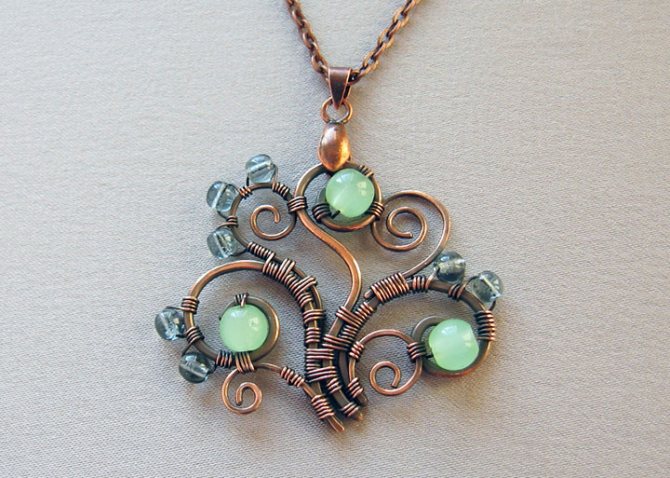
Mining locations
The most beautiful jadeites are mined in Burma.
The largest deposits of the gem are located in Myanmar and Guatemala, Mexico and China.
Jadeite deposits have not been developed in Russia for a long time. But they exist. The Khakass field is considered the largest in our country. In the vast expanses of Siberia, in the tributaries of the Kantegir River, there is the country’s jadeite treasury. The stone is pure white or light gray, very transparent. Often has a bluish or greenish tint.
We recommend: Rampage inclusion HAIRY
Stones of this type are considered “young” jadeite. Currently, the Chinese (experts and connoisseurs, we know this) recognize Khakass jadeite as second in the world after Burmese.
The Chinese were not lucky with Ural gems. At the end of the last century, they bought a large batch of stones from the Pusier deposit. The stone looked like jewelry jadeite. However, it turned out that all the stones were covered with microcracks and were not suitable for jewelry. Mining was also carried out using blasting operations - this improved the quality of the stone.
How to extract and which one is suitable for a bath
The mineral is mined not in the most gentle way - with the help of dynamite and heavy equipment. As a result, sometimes the rock becomes covered with microcracks and loses some physical properties. That is why experts believe that when it is not possible to choose a high-quality rock without defects, it is worth choosing sawn and tumbled jadeite for a bath.
An even cheaper alternative is river pellets. Just like in tumbling rock, the pellet contains no harmful impurities; they are washed out with water. The rock is easily distinguished by the thin but hard weathered film formed as a result of weathering.
In general, the pellet does not look so noble and expensive, but it does not crumble under temperature changes, and is excellent for a steam room both in terms of properties and price. The problem is that the mineral is mined in limited quantities. This is due to the insignificant volume of stone in the deposits, so it will not be easy to buy it. One way or another, in any version, from chipped to rounded jadeite is an ideal solution for a bath. Select stone fractions no larger than 5-10 cm.
Varieties and colors
The exact description and properties of the stone depend on the specific variety, as well as the grade. The color of jadeite can be green, white, less often – black, pink, yellow, blue, purple, brown.
The variety of colors distinguishes the mineral from jade.
Thus, the dark green subspecies with black specks is called chloromelanite, and the rich green subspecies with black specks is called albite jadeite or jade-albite. There are monoliths consisting mainly of this one mineral.
The most common subspecies:
- Imperial is an emerald green jewelry variety with a translucent, uniform structure. Imperial jadeite is the most expensive.
- Commercial is a semi-precious variety, but is intended for the production of less expensive products compared to the previous one. There is no transparency, the characteristic color is green, lavender, coral, yellowish.
- Utility is a cheap variety of greenish, lustrous black and white jadeite and is not considered a gemstone. It is used for making crafts and building baths due to its ability to maintain optimal temperature. It is divided into tumbled (polished) and crushed jadeite.
Properties of the mineral in the furnace
Natural jadeite can withstand temperatures up to 1200 degrees, so it requires non-contact heating. It is necessary that the mineral is heated not from an open source, but directly from the walls. In this case, it will not only radiate, but also retain heat for a long time.
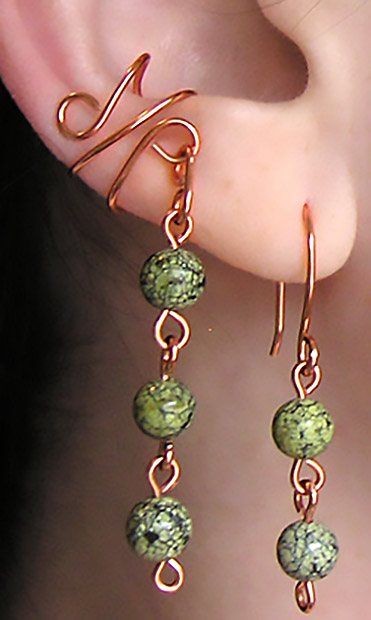
The rare earth substances contained in the mineral come into contact with each other under the influence of temperature. The result is a tonic effect that is difficult not to feel during bath procedures. For a sauna, jadeite is suitable not only as a heating element, but also as a material important for contact with the human body. In Turkish and Russian baths, the main thing is to adhere to the rule - the larger the area of the jadeite slab and the closer to the body, the better.
During heating and cooling, the stone changes color and this is normal. Moreover, this ability makes the mineral a bright piece of bath decor, attracting attention. In other words, you cannot find a more suitable natural stone than jadeite for a sauna, with the possible exception of its “brother” jade.
There are a limited number of jadeite deposits on earth, most of them are located in hard-to-reach areas, and there is a problem with the volume of reserves. Despite this, in Russia every second store selling minerals offers unlimited quantities of jadeite for baths. You need to understand that the naturalness of products is discussed in isolated cases, which is why it is so important to request documents confirming the authenticity.
How to care for jadeite baths and saunas
In order for a natural breed to last as long as possible, it needs to be properly cared for. Experts emphasize the need for regular washing of minerals. It is enough to do this every six months.
From time to time, stones are sorted, selecting specimens with defects (cracks and chips). Damaged stone should not be left in further use. This will disrupt thermal conductivity and worsen the effect over time. Every few years it is recommended to update the jadeite in the kiln. The first update will be needed after five years, further ones depending on the intensity of use.
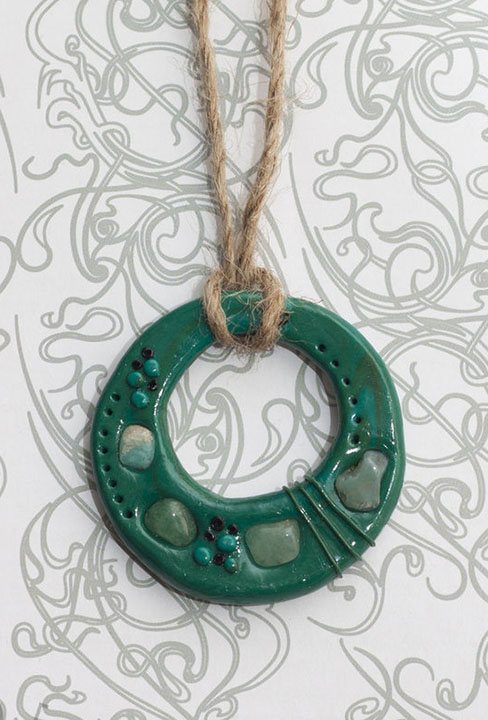
Jadeite for baths
And so, according to customer reviews, jadeite is an excellent stone for baths, it gives pleasant warmth and lasts for a very long time. The heat capacity of jadeite is good, that's true. In addition, if the stone is of high quality, it does not contain any impurities and does not emit any odor.
If you are going to take jadeite for a bath, then here is a little advice to ensure that the stone pleases you for many years:
In addition to jadeite, take cheap stones such as diabase. Diabase has less strength. Thanks to this, when the stones begin to move, the diabase will be the first to fail.
Thanks to this tip, you will preserve your jadeite for many years. If you fill the heater with jadeite alone, then when the stone moves, lower quality jadeite stones will suffer. And diabase in this regard acts as “cannon fodder”. Agree, it is easier to change diabase than jadeite.
